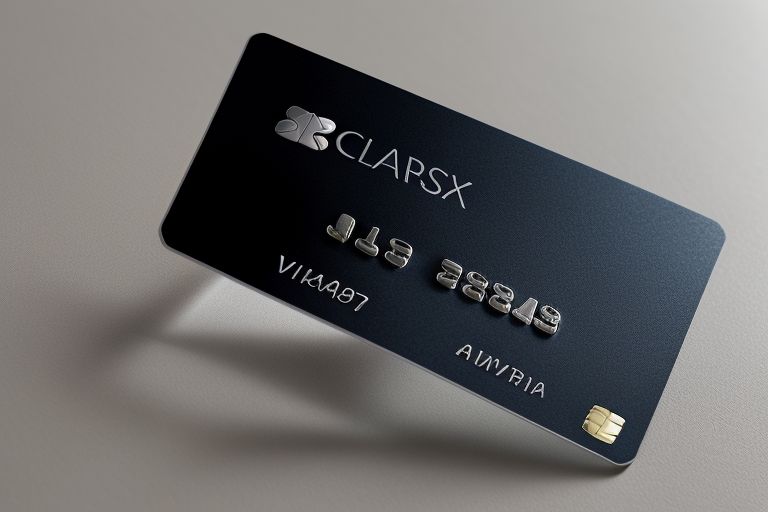Credit Card to Credit Card

Credit Card to Credit Card Payment
Paying one credit card with another credit card is generally not a straightforward or recommended method of managing debt due to several reasons, but there are some specific ways it can be done under certain circumstances. Here’s a breakdown of how it might work, the risks involved, and alternative solutions:
Methods to Pay One Credit Card with Another
- Balance Transfer:
- How It Works: A balance transfer involves moving debt from one credit card to another, usually to take advantage of lower interest rates or promotional offers.
- Process:
- Apply for a Credit Card: Choose a credit card with a balance transfer offer (e.g., 0% APR for a certain period).
- Request the Transfer: Provide details of the card you wish to pay off during the application or after approval.
- Complete Transfer: The new card issuer pays off your old card, and you now owe the new card issuer.
- Fees and Considerations: Watch for balance transfer fees, which typically range from 3% to 5% of the amount transferred. Also, ensure you understand the interest rate after the promotional period ends.
- Cash Advance:
- How It Works: Use one credit card to take out a cash advance and then use that cash to pay off another Credit Card to Credit Card .
- Process:
- Withdraw Cash: Use your credit card to get cash from an ATM or bank.
- Pay Off Old Card: Use the cash to pay off the balance on the other card.
- Fees and Considerations: Cash advances often come with high fees and higher interest rates, and you may be charged from the day of the withdrawal. Also, credit cards often have limits on cash advances that might not cover your balance.
- Using a Credit Card Convenience Check:
- How It Works: Some credit card issuers provide convenience checks that you can use to pay off other credit cards.
- Process:
- Write a Check: Use the convenience check to pay off the balance on another credit card.
- Submit Payment: Send the check to the credit card issuer.
- Fees and Considerations: Be aware of the potential fees and interest rates associated with using convenience checks, as they are often treated like cash advances.
Risks and Considerations
- High Fees and Interest Rates: Balance transfers often come with fees and a higher interest rate after the promotional period. Cash advances and convenience checks generally come with high interest rates and fees from the start.
- Potential for Increased Debt: Using one credit card to pay another can lead to more debt if not managed carefully, especially if you are only shifting debt around rather than reducing it.
- Impact on Credit Score: Excessive credit utilization or applying for new credit cards can impact your credit score. Ensure you manage your credit responsibly.
Alternatives
- Debt Consolidation Loan:
- How It Works: Take out a personal loan to pay off multiple credit card debts.
- Benefits: Often comes with lower interest rates compared to credit cards. Fixed monthly payments make budgeting easier.
- Credit Counseling:
- How It Works: Seek advice from a certified credit counselor who can help create a debt management plan.
- Benefits: Provides professional guidance and may help negotiate lower interest rates with creditors.
- Budgeting and Repayment Plans:
- How It Works: Create a budget to manage expenses and pay down debt systematically.
- Benefits: Helps in getting out of debt without additional fees.
- Negotiating with Creditors:
- How It Works: Contact your credit card companies to negotiate lower interest rates or payment plans.
- Benefits: Directly addresses the issue with your creditors and can potentially reduce your debt burden.
Before proceeding with any option, consider consulting a financial advisor or credit counselor to determine the best strategy for your situation.
Charge and fee
In the context of credit cards and financial transactions, understanding the difference between a “charge” and a “fee” is important for managing your finances effectively. Here’s a breakdown of each:
Charge
Definition: A “charge” refers to the amount billed to your credit card account for a purchase or transaction. Charges are the cost of goods or services that you buy using your credit card.
Examples of Charges:
- Retail Purchases: Buying items from a store or online.
- Restaurant Bills: Paying for meals at restaurants.
- Travel Expenses: Booking flights, hotels, or car rentals.
- Subscription Services: Paying for memberships or recurring services.
Impact on Credit Card Balance:
- Charges increase your credit card balance, and they need to be paid off to avoid accruing interest.
Fee
Definition: A “fee” is an additional amount that the credit card issuer charges you for specific actions or services related to your account. Fees are not related to purchases but rather to specific aspects of your credit card usage.
Common Types of Fees:
- Annual Fee:
- Description: A yearly fee charged for having the credit card, usually associated with premium cards offering rewards or benefits.
- Example: Rs499+gst annual fee for a travel rewards card.
- Late Payment Fee:
- Description: Charged if you miss a payment or pay your credit card bill after the due date.
- Example: 400-1500+gst late payment fee.
- Overlimit Fee:
- Description: Charged if you exceed your credit limit.
- Example: Rs450+gst overlimit fee.
- Cash Advance Fee:
- Description: Charged for withdrawing cash using your credit card, often a percentage of the cash advance amount.
- Example: 5% of the cash advance amount or a Rs10 minimum fee.
- Balance Transfer Fee:
- Description: Charged when transferring a balance from one credit card to another, typically a percentage of the amount transferred.
- Example: 3% of the balance transfer amount.
- Foreign Transaction Fee:
- Description: Charged for transactions made in a foreign currency or outside the India
- Example: 3% of the transaction amount.
- Returned Payment Fee:
- Description: Charged if a payment you make is returned due to insufficient funds or other issues.
- Example: RS 900 returned payment fee.
Differences Between Charges and Fees
- Nature:
- Charges: Directly related to purchases or transactions you make with your credit card.
- Fees: Additional costs imposed by the credit card issuer for certain actions or conditions.
- Impact on Balance:
- Charges: Directly increase your credit card balance.
- Fees: Also increase your balance but are related to account management and not purchases.
- Payment Terms:
- Charges: Typically need to be paid according to the card’s billing cycle to avoid interest.
- Fees: Are usually charged immediately when the condition for the fee is met and are part of your account’s balance.
Managing Charges and Fees
- Avoid Fees: Pay attention to the terms and conditions of your credit card to avoid unnecessary fees. Set up reminders or automatic payments to avoid late fees.
- Understand Charges: Keep track of your spending to ensure that all charges are accurate and within your budget.
- Review Statements Regularly: Regularly check your credit card statements for any unfamiliar fees or charges and contact your issuer if there are discrepancies.
- Utilize Alerts and Tools: Many credit cards offer features like spending alerts, budgeting tools, and automatic payment setups to help manage your account more effectively.
By understanding the distinctions between charges and fees and managing them appropriately, you can better handle your credit card usage and avoid unnecessary costs.
Advantage or disadvantages
When managing credit cards, both charges and fees come with their own sets of advantages and disadvantages. Understanding these can help you make better financial decisions and avoid unnecessary costs.
Charges:
Advantages:
- Convenience:
- Credit card charges offer a convenient way to pay for goods and services without carrying cash. They are widely accepted and provide a secure transaction method.
- Building Credit History:
- Regular and responsible use of credit cards (e.g., paying off charges on time) can help build a positive credit history and improve your credit score.
- Rewards and Benefits:
- Many credit cards offer rewards programs, cash back, or travel benefits for purchases made. Charges can earn points, miles, or cash back, which can be valuable.
- Purchase Protection:
- Credit cards often come with purchase protection benefits, such as extended warranties, return protection, or fraud protection.
Disadvantages:
- Interest Accumulation:
- If you don’t pay off your balance in full each month, the charges accrue interest, which can become costly over time. High interest rates can significantly increase the amount you owe.
- Risk of Debt Accumulation:
- Frequent use of credit cards for charges can lead to accumulating debt, especially if not managed properly. This can result in financial strain and high-interest payments.
- Impact on Credit Score:
- High credit utilization (using a large portion of your credit limit) or missed payments can negatively impact your credit score.
- Potential for Overspending:
- The ease of making charges with a credit card can lead to overspending and financial difficulties if not monitored carefully.
Fees:
Advantages:
- Access to Credit Benefits:
- Some fees, like annual fees, are associated with premium credit cards that offer valuable benefits such as higher rewards rates, travel insurance, or airport lounge access.
- Special Services:
- Fees such as balance transfer fees or foreign transaction fees may be necessary for certain financial strategies or international travel, providing flexibility and financial options.
- Avoiding Penalties:
- Understanding and avoiding fees, such as late payment fees or overlimit fees, can help maintain good standing with your credit card issuer and avoid additional charges.
Disadvantages:
- Additional Costs:
- Fees such as annual fees, late payment fees, and cash advance fees add extra costs to using your credit card, which can diminish the overall value.
- Unexpected Charges:
- Certain fees, like foreign transaction fees or returned payment fees, might not be anticipated and can cause financial strain or surprise expenses.
- Impact on Overall Costs:
- Fees can increase the total cost of using a credit card, especially if you frequently incur fees like cash advances or balance transfers, which may negate the benefits of rewards or lower interest rates.
- Complexity:
- Understanding all the potential fees and their conditions can be complex, leading to unintentional fee accrual if you’re not fully aware of the terms and conditions of your card.
Balancing the Pros and Cons:
- Regular Monitoring: Keep a close eye on your credit card statements and fees to avoid unnecessary costs.
- Strategic Use: Use your credit card strategically to maximize rewards and minimize fees. For example, choose cards with no foreign transaction fees if you travel abroad frequently.
- Timely Payments: Always make payments on time to avoid late fees and interest accumulation. Setting up automatic payments or reminders can help.
- Choosing the Right Card: Select a credit card that aligns with your financial habits and needs, such as one with a low annual fee if you don’t frequently use premium benefits.
By understanding both the advantages and disadvantages of credit card charges and fees, you can better manage your credit card usage, make informed decisions, and optimize your financial outcomes.








